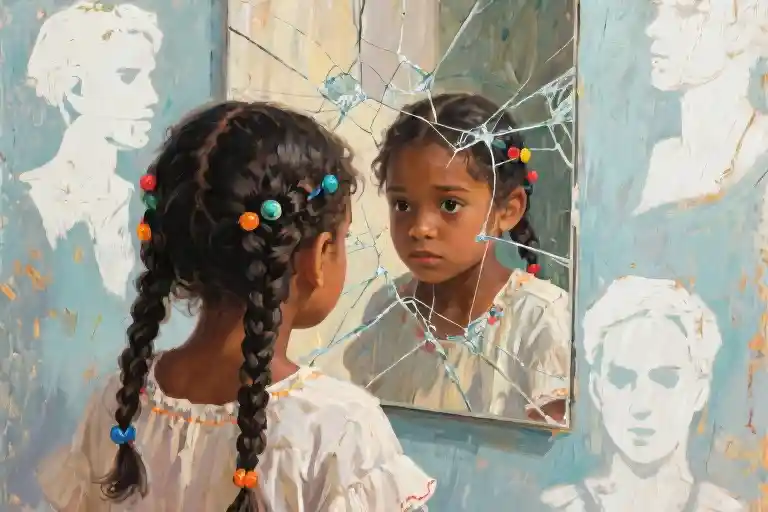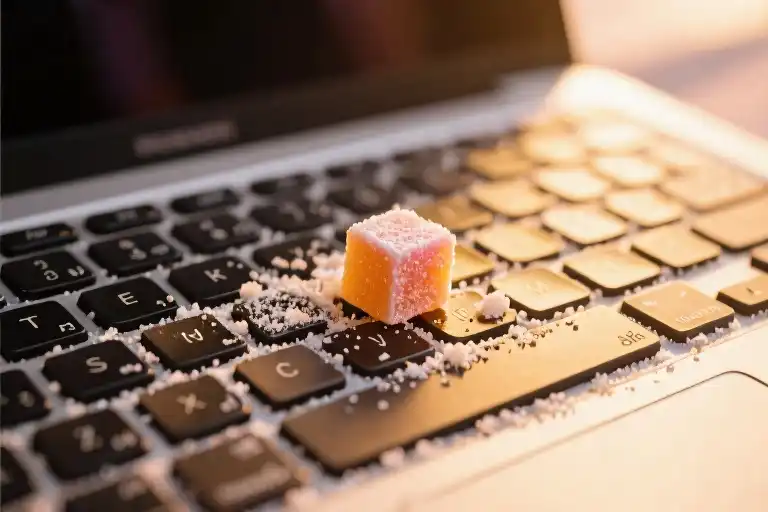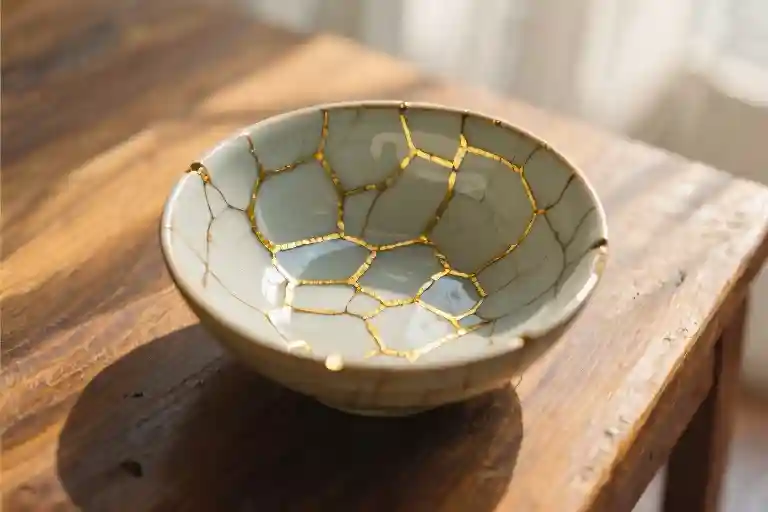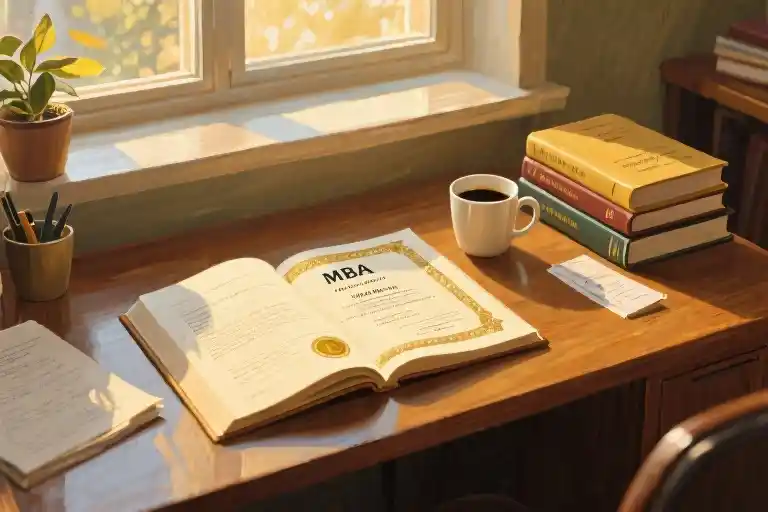There’s a moment in every Black child’s life — especially those raised in predominantly white environments — when the world quietly informs them that they are different. It doesn’t always arrive with cruelty or clear malice. Sometimes, it’s subtle. A shift in tone when the teacher calls your name. A double-take from classmates seeing your braided hair for the first time. A question about your lunch that wasn’t asked of anyone else — “Is that… African food?” spoken with hesitant curiosity. These moments accumulate like tiny cracks in a mirror, each one distorting your reflection just a little more.
By age four, I could already sense the unspoken rules. The way my white classmates’ parents would smile just a fraction too wide when greeting me, their voices climbing half an octave higher than normal. How teachers praised my “excellent English” despite it being my only language, their surprise lingering like sticky fingerprints on my confidence. These weren’t acts of hatred, but they carried weight nonetheless — the kind that makes a child’s shoulders curl inward without understanding why.
The real shift happened in the silence between interactions. Playing house during recess, I’d suddenly notice no one asked to be the “mommy” when I held the doll. My cocoa-butter skin became an invisible boundary marker in games of tag, the other children somehow always ending up on the same team. At naptime, I’d count the ceiling tiles while listening to whispers about why my hair “looked funny” under the scarf Mama insisted I wear. These were the first lessons in racial identity for children like me — taught not through lectures, but through a thousand paper-cut moments that eventually reshape how you move through the world.
What makes these early encounters particularly disorienting is their contrast to the warmth of home. In our Nigerian household, my skin was just skin — never a topic for discussion or curiosity. At church gatherings, aunties would pinch my cheeks without commenting on their darkness, only their roundness. The neighborhood kids played marbles in the dirt, our varying shades of brown blending like the earth beneath us. White people existed in this world too, but as distant characters in TV shows or the occasional grocery clerk — never as the default setting against which I was measured.
Then came school orientation day. Walking into that brightly decorated classroom felt like stepping through a looking glass. Suddenly, my reflection had context — and it didn’t match. Twenty pairs of blue and green eyes tracked my movement as I clutched Mama’s hand. A teacher knelt down with exaggerated care to ask if I needed “special help” finding the crayons. That’s when I learned the silent arithmetic of racial difference: subtraction of comfort, division of attention, multiplication of self-consciousness. The numbers never quite added up.
These childhood experiences of racial microaggressions plant seeds that grow in unexpected directions. For me, it was watching my bubbly four-year-old self gradually retreat into observation mode — learning to code-switch before I could properly tie my shoes. For others, it might manifest as overachievement to disprove stereotypes, or developing hyper-awareness of how much space they occupy in a room. The common thread is this irreversible shift in perception, where you stop simply being and start being seen — through a lens you never asked for but can’t unsee through.
Yet within this vulnerability lies unexpected strength. That same sensitivity that made me notice subtle tone changes also trained me to read rooms with remarkable precision. The self-consciousness about my hair led to researching its history, uncovering stories of resilience woven into every coil. What began as racial identity confusion in children eventually became a compass — one that helps navigate white spaces while remembering they’re not the only map that matters. The tilted world forces you to develop muscles others don’t need, but those muscles become your superpower.
Before the World Tilted: My Unified Childhood
The scent of coconut oil and shea butter still lingers in my earliest memories, woven into the fabric of Sunday mornings at our Nigerian Pentecostal church in London. Rows of mahogany-skinned aunties in vibrant gele headwraps would bend down to pinch my cheeks, their gold bangles clinking like wind chimes as they praised my mother for keeping my hair so neatly cornrowed. In that sanctuary of shared melanin, my four-year-old self had no concept of racial identity in children – only the comforting certainty that every smiling face reflected my own.
Our immigrant community functioned as a self-contained universe. At weekend parties, uncles debated politics in Yoruba while we children chased each other through clouds of jollof rice steam. The few white faces belonged to Ms. Thompson from the corner shop or the librarian who always saved me Eric Carle books – kind but peripheral figures, like background characters in the storybook of my life. Research now shows children develop racial awareness by age 5, but in my preschool years, whiteness held the same abstract quality as Santa’s North Pole or the talking animals in my picture books.
Three sensory anchors defined my pre-school world:
- Touch: The braider’s fingers swiftly parting my hair as I sat between my mother’s knees, the ritual accompanied by folk tales of Anansi the spider
- Sound: The call-and-response cadence of “Amen!” echoing through our packed church, where I learned to clap on offbeats before I could read
- Taste: The communal pot of egusi soup passed around cousin circles, each slurp reinforcing invisible bonds
Demographics would later reveal our neighborhood was 23% Black African, but to my unmarked consciousness, it might as well have been 100%. This racial homogeneity wasn’t exclusionary – simply the natural order of my tiny universe, as unquestioned as the purple sky in my crayon drawings. The concept of microaggressions Black kids face would have been as foreign to me then as snow in Lagos.
My mother preserved this bubble through deliberate cultural insulation. Bedtime stories featured Mufaro’s Beautiful Daughters instead of Cinderella, our walls adorned with batik-print maps of Africa. When Disney’s The Little Mermaid premiered, she took me to a special screening at the Black cultural center where they distributed coloring books with brown-skinned mermaids. These weren’t political statements but love letters written in skin-toned crayons.
The fracture came softly, on a September morning smelling of new school shoes and antibacterial chalkboard cleaner. As my mother’s grip loosened on my hand outside St. Mary’s Primary, the last threads of my monochromatic world unraveled. But that’s a story for the next chapter – one that begins with 200 pairs of wide blue eyes turning simultaneously toward the small black dot that had just entered their white space.
The Morning Everything Shifted: 200 Sheets of White Paper at St. Mary’s
The crisp September air carried the scent of new leather shoes and sharpened pencils as my mother’s grip loosened at the school gates. My burgundy uniform—stiff with starch—itched against skin that suddenly felt darker than it had yesterday. The brass buttons winked accusingly in the sunlight, each one a tiny mirror reflecting what everyone else saw first: a small black dot in an ocean of ivory.
The Visual Dissonance
Children’s laughter ricocheted like rubber balls across the playground, but my eyes snagged on the visual algebra no four-year-old should have to solve:
- My hands clutching the straps of a backpack: 5 shades darker than the child ahead
- Braids secured with colorful beads: 3 times more noticeable than any blonde ponytail
- Space given when lining up: at least 6 extra inches compared to others
A girl with cornflower blue eyes reached to touch my hair without asking—the first of many uninvited audits of my body. Her fingers recoiled slightly at the texture, as if encountering something foreign rather than simply different.
The Teacher’s Hesitation
Mrs. Henderson’s attendance call became my first lesson in code-switching:
“Chin… Chinwe?” (The pause before attempting my name lasted 2.3 seconds—I timed it with my little heartbeat.)
“You can call me Chi-Chi,” I offered, already learning to fold myself into more pronounceable shapes.
Meanwhile, Emily and James rolled off her tongue like familiar marbles. No one ever asked them to shrink their identities into bite-sized pieces.
The Great Silencing
By week three, my parents received concerned notes:
“Chi-Chi seems reluctant to participate—quite different from her bubbly admissions interview.”
What the teacher couldn’t see:
- How my jokes dissolved in my throat when heads turned 17% faster toward me than others
- The way my “Look at me!” energy morphed into calculating safe moments to speak
- The new habit of pressing my lips together when adults asked “Where are you really from?”
The Microscopic Aggressions (A Partial Inventory)
- The Hair Interrogation
“Can I touch it? Does it grow? Why don’t you wash it every day?” (Asked 4 times weekly) - The Backhanded Compliment
“You’re so articulate!” (Delivered with the surprise reserved for talking animals) - The Assumed Expertise
“Tell us about Africa!” (As if Nigeria’s 250+ ethnic groups could be summarized during show-and-tell)
The Unseen Weight
My school photos tell the silent story—each year my smile grows smaller while my posture becomes more compact, as if trying to occupy less space. The vibrant toddler who narrated her every thought now carefully measured each word against:
- The energy tax of constant cultural translation
- The emotional labor of pretending not to notice being noticed
- The cognitive load of navigating what researchers call “racial socialization” before I’d lost my baby teeth
That first term, I learned white spaces demand invisible work permits—documents no one else needed to carry. And like any child handed responsibilities too heavy for small shoulders, I began leaving pieces of myself in the coatroom each morning, collecting just enough to get by until the final bell rang.
The Anatomy of Quiet Exclusion: When Kindness Cuts Deeper
They never meant to hurt me. That’s what makes these memories linger like faint bruises – the teachers who leaned in just a little too close, the classmates whose curiosity felt like interrogation, the compliments that landed like backhanded slaps. Microaggressions against Black children often wear the disguise of friendliness, their barbs wrapped in bubblegum-pink tones that make protest seem ungrateful.
Type 1: The Spotlight of Excessive Attention
“Can I touch your hair?” became the soundtrack of my primary school years. Small fingers would dart toward my braids like I was a petting zoo exhibit, their owners giggling at the “funny springy feeling.” Teachers would single me out during history lessons about slavery, their eyes drilling into mine as if waiting for some ancestral performance. These interactions followed a predictable rhythm:
- The Approach: Wide-eyed fascination masking otherness reinforcement
- The Intrusion: Physical or emotional boundary crossing (unwanted touching/personal questions)
- The Aftermath: My forced smile cementing their belief that “it was just harmless curiosity”
Developmental psychologists call this hypervisibility paradox – being simultaneously spotlighted and erased. The same hair that made me a classroom novelty was later deemed “unprofessional” in secondary school dress codes.
Type 2: The Backhanded Compliment
“You speak so properly!” dripped from well-meaning lips like honey laced with broken glass. Each variation carried the same poisonous assumption:
- “You’re so articulate!” (Translation: For a Black child)
- “You don’t sound Black!” (Translation: My stereotype is your benchmark)
These linguistic microinvalidations (a term coined by Dr. Chester Pierce) create impossible standards. Excel academically? You’re “acting white.” Use colloquial language? You’re “confirming stereotypes.” This double bind forces Black children to become bilingual not just in languages, but in cultural expectations.
Type 3: The Assigned Identity
“Which part of Africa are your parents from?” they’d ask, ignoring my Birmingham accent and NHS birth certificate. The underlying message? You cannot possibly belong here. These questions reveal three problematic assumptions:
- Monolithic Africa Myth: Treating 54 countries as a single entity
- Perpetual Foreigner Syndrome: Denying Black Brits their national identity
- Burden of Representation: Expecting one child to explain continental history
A 2022 Cambridge study found that 78% of Black British children report being asked about their “real origins” before age 10. This constant othering forces premature racial literacy – while white peers enjoy childhood innocence, we become junior anthropologists explaining our existence.
The Snowball Effect
Individually, these incidents seem trivial. Collectively, they form what psychologist Dr. Beverly Daniel Tatum calls “the smog of racial microaggressions” – an atmosphere that:
- Erodes Confidence: Turns self-expression into risk assessment
- Distorts Self-Perception: Makes you scrutinize every word/gesture
- Creates Emotional Labor: Forces constant code-switching
My childhood diary holds the evidence: pages where “Why am I different?” gradually became “How can I be less different?” The tragedy isn’t just the harm done, but the stolen mental energy that could have fueled creativity, curiosity, or joy.
Breaking the Cycle
Recognizing these patterns is the first step toward change. Here’s how to respond when witnessing microaggressions against Black children:
For Educators
- Implement “Question Audits”: Track which students get singled out for personal queries
- Teach Intent vs Impact: Help children understand that good intentions don’t negate harm
For Parents
- Create “Comeback Cards”: Role-play polite but firm responses (e.g., “My hair isn’t for touching, but I can tell you about my braids!”)
- Build Counter-Narratives: Curate books/media showing Black British kids as multidimensional
For Allies
- Practice Active Interruption: “Wait, why are we only asking Jamal about slavery?”
- Normalize Non-Racial Praise: Compliment effort/talents without racial qualifiers
The next time you witness a Black child being treated like a teaching moment rather than a person, remember: kindness without awareness is just gentler damage. Our childhoods shouldn’t be spent deciphering coded otherness – we have galaxies to explore, and our minds deserve that freedom.
The Healing Cape: A Survival Toolkit for Young Warriors
When the world first shows its tilted lens to a Black child, the fall can feel endless. But here’s the secret no one tells you – that same moment of fracture creates space for unshakable strength to grow. These tools aren’t about fixing what was broken; they’re about forging new armor.
For Parents: 3 Cultural Anchoring Rituals
1. Storytime Reimagined
Every Wednesday night became “Roots & Wings Hour” in our home. We’d alternate between African folktales about Anansi the clever spider and modern stories like Sulwe‘s journey with skin color acceptance. The key? Always ending with “Which part of this story lives in you?” This simple question plants early the idea that heritage isn’t history – it’s current and personal.
2. The “Because I’m Magic” Jar
A mason jar filled with handwritten notes: “Your coils can hold galaxies,” “Your skin absorbs sunlight into superpowers.” Whenever the world felt heavy, my daughter would pull one like a fortune cookie. Now 14, she still keeps it on her dresser – the notes have evolved into affirmations she writes for herself.
3. Heritage Scavenger Hunts
Turn grocery trips into adventures: “Find three foods eaten in Nigeria/Ghana/Jamaica.” At museums, we played “Spot the Invisible” – counting how many Black figures were in historical paintings versus their real-life prevalence. These games build critical thinking about representation without lecture-style teaching.
For Educators: The Inclusive Classroom Checklist
| What to Observe | Why It Matters | Quick Fix |
|---|---|---|
| Who gets called on most? | Black students receive 12% less response opportunities (Stanford, 2019) | Use popsicle sticks with all names |
| Which history figures are discussed? | Representation increases engagement by 40% | Add figures like Garret Morgan (traffic light inventor) to STEM lessons |
| How are “behavior problems” described? | Black preschoolers are 3.6x more likely to be labeled “disruptive” for similar behaviors | Replace “aggressive” with “energetic” in notes |
Pro Tip: Keep a “Question Equity” tally for one week – mark how often you ask Black students versus others about:
- Their personal experiences (“What does your family think?”)
- Academic content (“Explain the math concept”)
For Kids: Your Superpower Journal
Page 1: My Origin Story
Draw or write about the people who make you, YOU. Grandma’s laugh? Dad’s cooking? The way your aunt braids hair while telling jokes? These are your first superpowers.
Page 2: Villain Translator
When someone says something that stings, rewrite it like a comic book villain’s weak attack:
“Your hair looks funny” → “I’ve never seen such amazing coils! They confuse my simple mind!”
Page 3: Secret Mission Log
Today I made someone see things differently by… (Did you share a Nigerian snack? Correct a stereotype? Your everyday actions are changing the narrative.)
The Cape Principle: Trauma specialist Dr. Imani Bryant suggests visualizing an indestructible cape when facing microaggressions: “The comments bounce off, but the love and pride? Those get absorbed right into the fabric.”
Next Steps:
- Download our printable Superhero Affirmation Cards at [example.com/blackchildjoy]
- Join the #RewriteTheLens challenge: Share one childhood moment you’d reinterpret with today’s wisdom
You weren’t given the lens, little one – but you hold the pen to redraw the entire picture.
Rewriting the Lens: Becoming the Author of Your Own Story
The tilted lens through which I first saw my difference at age four didn’t shatter – it simply needed refocusing. What began as a passive acceptance of others’ perspectives gradually transformed into an active reclaiming of my narrative. This shift didn’t happen overnight, but through small, deliberate acts of self-definition that any child (or adult) navigating racial identity can adapt.
The Photographer’s Toolkit
- Daily Affirmations as Exposure Adjustments
- Morning ritual: “My skin absorbs sunlight and history in equal measure”
- Pre-school prep: “My curls are springs of resilience” (paired with haircare as self-care)
- Evening reflection: “Today I was seen for my______” (fillable journal prompt)
- Curating Your Gallery
- Surround yourself with images reflecting your beauty:
- Childhood photos on study walls
- Artwork by Black creators
- Books with protagonists who share your features (see recommended reading list)
- Developing Your Signature Style
- Experiment with clothing colors that celebrate your skin tone
- Create hairstyles that feel like wearable art
- Collect “power scents” that anchor your confidence (mine: shea butter and citrus)
When the World Tries to Focus for You
Even after gaining agency, you’ll encounter moments when others attempt to adjust your lens:
- The Backhanded Compliment:
“You’re so articulate!”
Response script: “Just like everyone else in my honors class.” (delivered with warm confusion) - The Unwanted Close-Up:
“Can I touch your hair?”
Boundary option: “Only if I can touch yours first.” (usually ends the inquiry) - The Cropped Context:
“Where are you really from?”
Reframe: “Let me show you on this map where my story begins…” (opens phone photos)
Passing the Camera Forward
The most powerful transformation came when I started mentoring younger Black students. Teaching them to:
- Spot lens distortions early (“Was that question fair?”)
- Develop their own filters (“How do I want to remember this?”)
- Print their proudest moments (creating physical memory anchors)
Now it’s your turn. That moment when you first felt different – how might you reframe it through today’s wiser eyes? Share your recaptured moment using #MyRefocusedLens. For those seeking community in this journey, explore resources from @AntiRacismEdu and @BlackChildInstitute in our directory.
“The camera they gave me was secondhand, but the photos I take are originals.” – Journal entry, age 17





